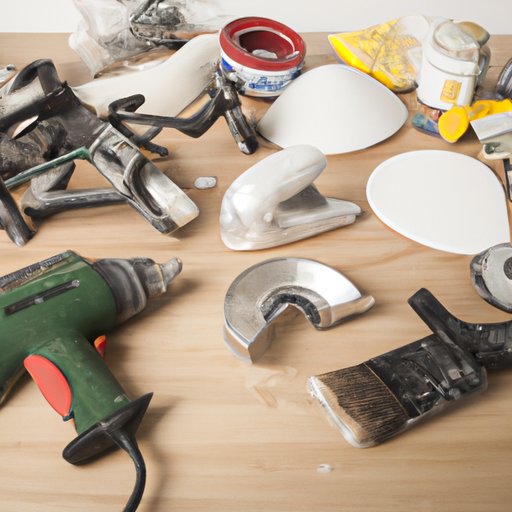Introduction
Removing paint from wood furniture can be a daunting task, but it doesn’t have to be. Whether you’re looking to restore an old piece of furniture or simply need to remove a few splotches of paint, there are several methods that can help you achieve a clean and beautiful finish. In this article, we’ll explore different ways to remove paint from wood furniture, including using paint strippers, sandpaper, a heat gun, nail polish remover, and a putty knife.
Use a Paint Stripper
Paint strippers are chemical solutions that are specifically designed to dissolve paint so it can be removed from surfaces. They come in both liquid and gel forms, and they typically contain strong solvents such as methylene chloride, toluene, and butyl acetate. When using a paint stripper, it’s important to wear protective gear such as gloves, goggles, and a respirator to protect yourself from fumes and splashes.
To use a paint stripper, first apply an even coat of the product to the area with a brush or roller. Let the stripper sit for about 15 minutes, then scrape off the softened paint with a putty knife or other scraping tool. Once all the paint is removed, wash the area with soap and water to remove any residue. Finally, sand the area lightly to ensure a smooth finish.
Sand the Wood Furniture
Sanding is another effective way to remove paint from wood furniture. Start by selecting the right type of sandpaper – coarse grits are best for removing paint, while finer grits are better for smoothing out the surface. Begin sanding with the coarsest grit and gradually move up to finer grits until you achieve the desired finish.
When sanding, be sure to wear a dust mask to protect your lungs from the particles. Also, keep the sandpaper damp to prevent it from clogging up with paint. When you’re finished sanding, wipe down the surface with a damp cloth to remove any remaining dust.
Use a Heat Gun
A heat gun is another useful tool for removing paint from wood furniture. It works by heating up the paint so it becomes soft and pliable, allowing you to scrape it away with a putty knife. However, it’s important to exercise caution when using a heat gun, as it can cause serious burns if not used properly.
Before using a heat gun, make sure to wear protective gear such as gloves, goggles, and a respirator. Then, set the heat gun to its lowest setting and hold it several inches away from the surface. Move the gun in slow, circular motions until the paint starts to bubble and blister. Finally, use a putty knife to scrape away the softened paint.
Apply Nail Polish Remover
Nail polish remover can also be used to remove paint from wood furniture. It contains strong solvents that can dissolve paint, making it easier to scrape away. Before using nail polish remover, test it on a small, inconspicuous area to make sure it won’t damage the wood.
To use nail polish remover, apply a generous amount of the product to the area with a cloth or brush. Let it sit for a few minutes, then use a putty knife to scrape away the softened paint. Once all the paint is removed, wash the area with soap and water to remove any residue.
Scrape with a Putty Knife
For stubborn paint spots, a putty knife is the perfect tool. It can be used to carefully scrape away the paint without damaging the wood. When using a putty knife, choose one with a flexible blade to avoid gouging the wood. Start by applying pressure to the paint spot and working your way around it until the paint starts to lift. Then, slowly scrape away the paint until it’s completely removed.
Conclusion
Removing paint from wood furniture doesn’t have to be a difficult task. With the right tools and techniques, you can easily restore your furniture to its original beauty. In this article, we explored different ways to remove paint from wood furniture, including using paint strippers, sandpaper, a heat gun, nail polish remover, and a putty knife. Remember to exercise caution when using any of these methods, and always wear protective gear to protect yourself from fumes and splashes.
Finally, here are a few tips for successful paint removal from wood furniture:
- Always test products on a small, inconspicuous area before applying them to the entire piece of furniture.
- Wear protective gear such as gloves, goggles, and a respirator when using chemicals or a heat gun.
- Keep the sandpaper damp when sanding to avoid clogging.
- Wipe down the furniture with a damp cloth after sanding to remove any remaining dust.
- Be patient and take your time when scraping with a putty knife – don’t rush it.


